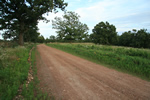America’s rural transportation system is in need of repairs and modernization to support economic growth in the nation’s Heartland, which is a critical source of energy, food and fiber and home to an aging and increasingly diverse population that is heavily reliant on the quality of its transportation system. A new report released by The Road Information program (TRIP) evaluates the safety and condition of the nation’s rural roads and bridges and finds that the nation’s rural transportation system is in need of improvements to address deficient roads and bridges, high crash rates, and inadequate connectivity and capacity.
America’s rural roads and bridges have significant deficiencies. In 2013, 15 percent of the nation’s major rural roads were rated in poor condition and another 39 percent were rated in mediocre or fair condition. In 2014, 11 percent of the nation’s rural bridges were rated as structurally deficient and 10 percent were functionally obsolete.
“The 61 million people who live in America’s rural heartland deserve a transportation system that is safe, efficient and reliable,” said Kathleen Bower, AAA vice president of public affairs. “It is up to Congress to pass a fully funded, long-term bill to improve our nation’s rural roads before the Highway Trust Fund runs out of money this summer.”
In addition to deteriorated roads and bridges, the TRIP report finds that traffic crashes and fatalities on rural roads are disproportionately high, occurring at a rate nearly three times higher than all other roads. In 2013, non-Interstate rural roads had a traffic fatality rate of 2.20 deaths for every 100 million vehicle miles of travel, compared to a fatality rate on all other roads of 0.75 deaths per 100 million vehicle miles of travel. Rural traffic fatality rates remain high, despite a substantial decrease in the number of overall fatalities.
“America’s rural transportation network plays a key role in the success and quality of life for U.S. farmers and ranchers,” said Bob Stallman, president of the American Farm Bureau Federation. “But deteriorated and deficient rural roads and bridges are hindering our nation’s agricultural goods from reaching markets at home and abroad and slowing the pace of economic growth in rural America. Securing the appropriate resources at the local, state and federal levels will allow for the improvements needed to provide a rural transportation system that will keep goods moving, improve quality of life and quicken the pace of economic growth.”
The quality of life in America’s small communities and rural areas and the health of the nation’s rural economy is highly reliant on the quality of the nation’s rural transportation system, particularly its roads, highways and bridges. America’s rural transportation system provides the first and last link in the supply chain from farm to market while supporting the tourism industry and enabling the growing production of energy, food and fiber. Rural Americans are more reliant on the quality of their transportation system than their urban counterparts.
“America’s rural transportation system enables the farm to market supply chain, supports our tourism and energy industries, and allows for the production of the goods and services that are vital to our nation’s economic health and growth,” said Janet Kavinoky, executive director of Transportation and Infrastructure at the U.S. Chamber of Commerce. “But years of inadequate transportation funding have left a deficient rural transportation network that does not meet present-day demands. Improving the transportation system will create jobs today and leave a lasting asset for future generations.”
The TRIP report finds that the U.S. needs to adopt transportation policies that will improve rural transportation connectivity, safety and conditions to provide the nation’s small communities and rural areas with safe and efficient access to support quality of life and enhance economic productivity.
To accomplish this, the report recommends modernizing and extending key routes to accommodate personal and commercial travel, implementing needed roadway safety improvements, improving public transit access to rural areas, and adequately funding the preservation and maintenance of rural transportation assets.
“The safety and quality of life in America’s small communities and rural areas and the health of the nation’s economy ride on our rural transportation system. The nation’s rural roads provide crucial links from farm to market, move manufactured and energy products, and provide access to countless tourism, social and recreational destinations,” said Will Wilkins, executive director of TRIP. “But, with long-term federal transportation legislation stuck in political gridlock in Washington, economic growth in America’s rural communities could be threatened. Funding the modernization of our rural transportation system will create jobs and help ensure long-term economic development and quality of life in rural America.”

